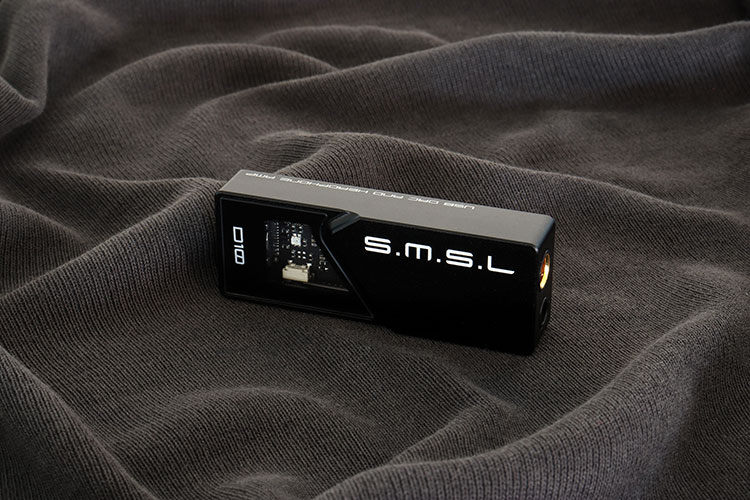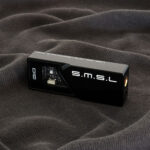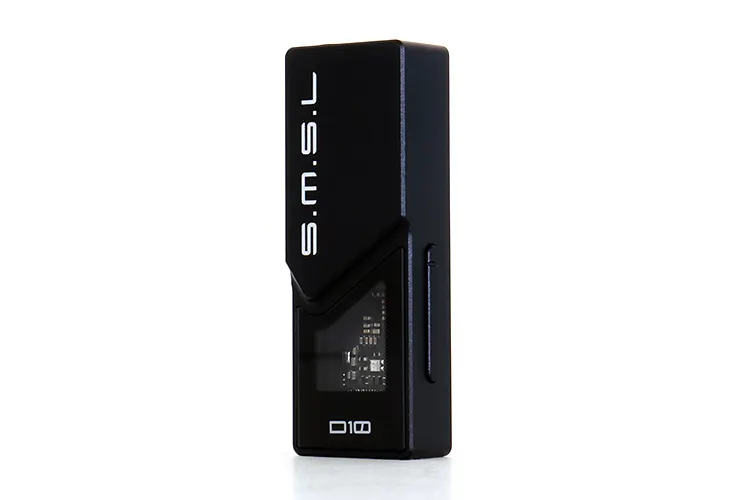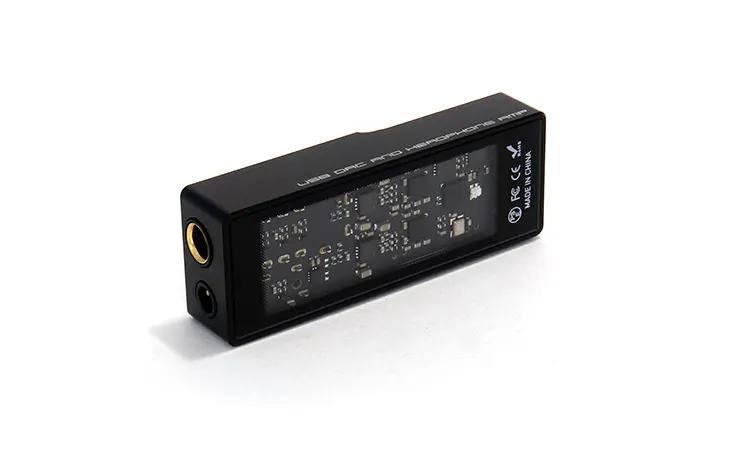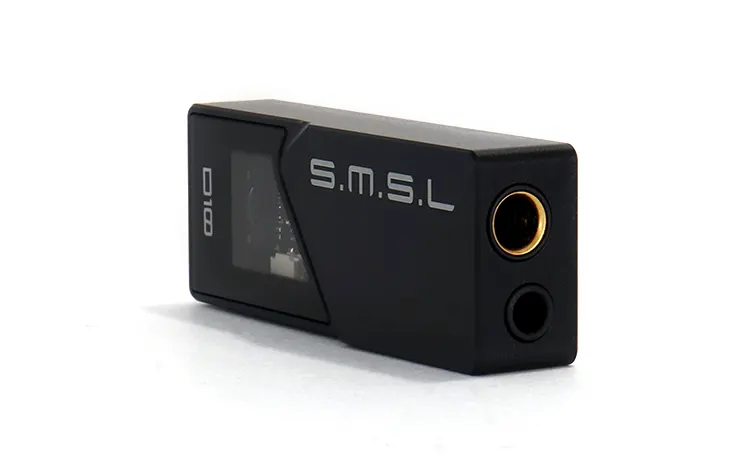Today, Louis reviews the SMSL D10, the company’s debut balanced dual Cirrus Logic CS43131 dongle DAC with up to 500mW of output power. It is priced at $69.99.
Disclaimer: This sample was sent to me in exchange for my honest opinion. Headfonics is an independent website with no affiliate links or partnerships. I thank Shenzhen Audio and SMSL for their support.
Click here to learn more about the SMSL products we previously reviewed on Headfonics.
Note that this article follows our current scoring guidelines which you can find in more detail here.
SMSL’s latest launch has two distinct and interesting points. First off, it’s SMSL’s debut Dongle DAC and the second point is that up to this point, it’s the smallest component SMSL has ever released.
The recently released $69.99 SMSL D10 Dongle DAC has these points of interest but it is also entering late into the highly saturated market full of fierce competition such as ddHiFi’s TC44C and FiiO’s KA13 to name but a few.
If I were confronted with the question of how a Dongle DAC can be successful today, I would say it would have to include two traits. Uniqueness, value, and great sound. Okay, three. The big question is, does the SMSL D10 have those three traits?
Features
To me, the most important aspect of a Dongle DAC’s internals is the DAC chipset and the SMSL D10 uses dual Cirrus Logic CS43131 DACs with decoding up to PCM 32bit 384kHz rates and DSD256.
From that point on, the signal goes into a couple of SGM 82622 high-speed amplifiers capable of producing in this device a maximum of 500mW (16Ω) of output power balanced down to 40mW on heavier 600Ω loads.
The USB input section seems to be handled by a National Semiconductor 9312 chip alongside a 12mHz crystal. I also see two EPROM chips alongside the two 9312 chips. All these components are visible behind the unit’s front-mounted see-thru glass.
Compatibility-wise, I could not find a single device in my arsenal of stuff that didn’t play nice with the D10 and I tried them all except for a MAC OS and Linux for lack of one. I even tried a Chromebook and it worked just fine.
I was also able to test the D10 with two Android mobile device models that use two different Android versions, an iPhone 14, and a PC with no issues and it seemed to act as a plug-and-play device in every scenario. No drivers are needed and that’s a good thing, including Windows 11.
Design
I was able to read off all the numbers on each chipset inside the SMSL D10 via the clear glass on the front of the body that gives you a clear view of all the components.
There’s another on the opposite side but it’s a half glass and you can only see a limited amount of components through that glass.
The overall aesthetics are interesting and the device denotes pride and showmanship in their craft because the SMSL has not one, but two windows that let you see the circuitry work.
The D10 proudly displays the SMSL logo upfront in big, bold white letters that highly contrast the body’s overall color.
I did see a couple of solder joints under my microscope on my device that looked overworked or with excessive solder but nothing super abnormal.
The D10 is solidly constructed from a single piece of Anodized Aluminum, and CNC-machined. The design has a raised area and squared off but the edges are smooth making this dongle pocket-friendly.
I/O
This device is what I call a straight-in-and-out device. The D10 has a USB-C input and a pair of headphone outputs. That’s it. The two ports consist of a single-ended 3.5mm tap and a 4.4mm balanced tap.
When you connect the D10 to a USB source, a pair of LEDs will light up to indicate that the unit is powered on, and these LEDs double duty by lighting up in red on high bitrates, on around 96k it lights up green, and lower bitrates make them glow blue.
The D10 also sports a rocker-type onboard volume control and that’s it. It’s a simple device that doesn’t count on apps or any other features.
The volume control acts independently. No matter where I used the D10, whether on a PC or an Android device, this volume control acted independently from the source’s volume control.
Packaging & Accessories
The SMSL D10 is a basic model that is offered at a low price so you shouldn’t expect a large number of accessories.
One accessory that I feel is missing is a USB-C to USB-A type adapter. It could also use a Lightning cable since it’s compatible with that connection type but in this case, you’ll have to outsource both those items if needed.
The box is large enough to fit those items inside the box but including more accessories would probably raise the price. The box has a lot of foam inside and the dongle is tucked away safely within a foam mold. It’s a well-laminated box that is strong enough to get the contents home safely.
What are the contents? You get the Dongle, a short, four-inch dual USB-C terminated cloth-wrapped cable plus an SMSL VIP card that I have yet to find out what it’s used for. I can’t find any information on their website or anywhere else.
Is there anything else missing here? There’s no manual or quick guide included. I couldn’t find one on their website either. But to be honest, you might not need one with this device due to it being such a simple device.
Sound Impressions
The following sound impressions of the SMSL D10 were completed using a mix of the HIFIMAN Arya Organic, FiiO’s FA19, and the FD5. A couple of ORIVETI models were also used including the OD100 and the OD200.
I often used the 4.4mm balanced port on each device within this write-up. I did so to be fair. I did not use the 3.5mm for comparisons because SMSL did not list specifications for that port.
Summary
The SMSL D10 portrays a clean, anesthetized, almost sterile sound signature that is neutral overall. There is a tilt into bright-sounding territory here.
The D10 produces bass that is lean and trim and some might find themselves reaching for a way to increase bass output. However, once boosted, the bass becomes impactful and can easily produce deep notes. The bass extension is there, hidden beneath all that neutrality.
The midrange production is quite luscious and the treble response follows suit. This dongle has what I call a studio-monitoring tuning in that nothing is emphasized but there’s a cleansing of the bass area that leads me to label it a cool-sounding dongle in general.
I could not hear any hiss being produced by this device, due to this dongle having a mute feature that only allows the unit to turn on the amplification section when there’s a sound source available at the input.
Staging and Dynamics
This is a dynamic-sounding dongle DAC indeed. It produces dynamics with a high level of crispiness and a high amount of snap. Snares sound crisp and other sounds that require a high level of dynamic range are produced with a speedy response.
This dongle brings to the table lots of presence and enough forwardness with lots of detail. It’s an astonishing feat in that you can get this much quality sound off such a budget device. It’s certainly a good time for audiophiles.
One of the areas of improvement within the dongle DAC segment is an improved soundstage capability. And the SMSL has a good one that includes height, width, and depth. It also can produce some micro placement if it’s present within a recording.
Click on page 2 below for my recommended pairings and selected comparisons.

